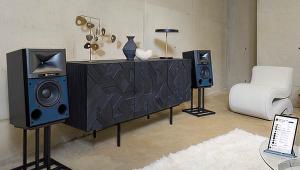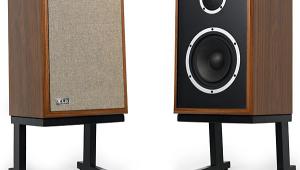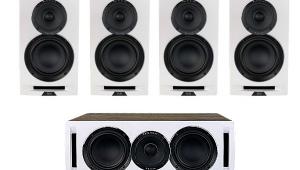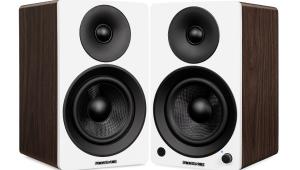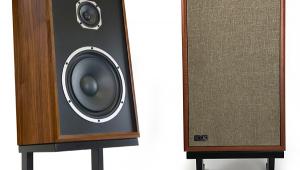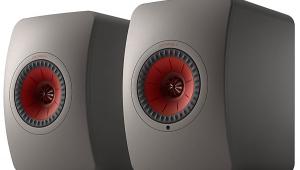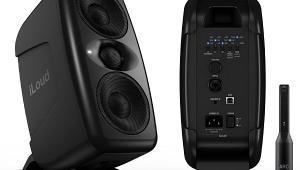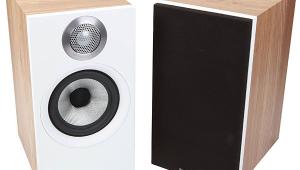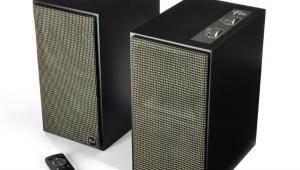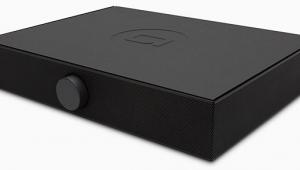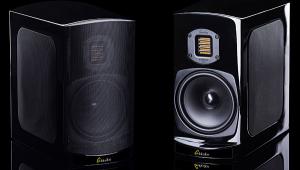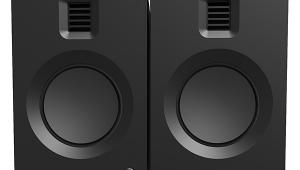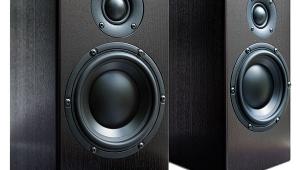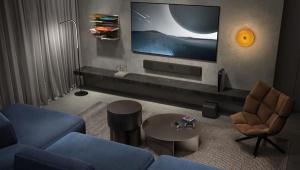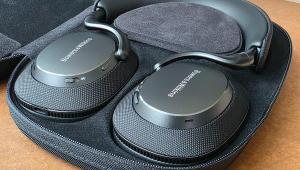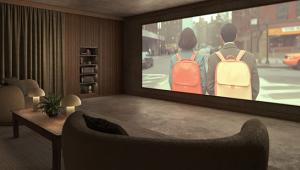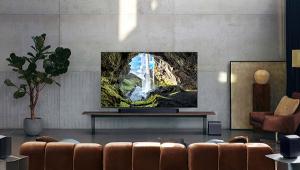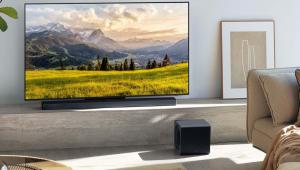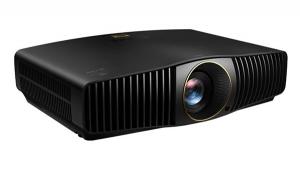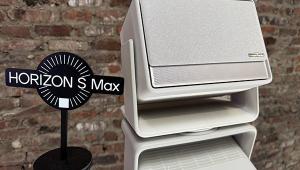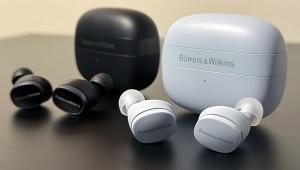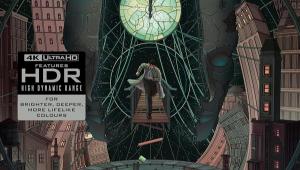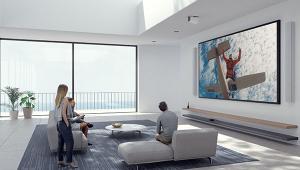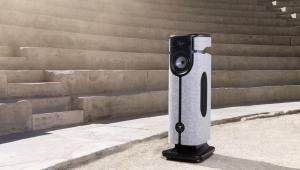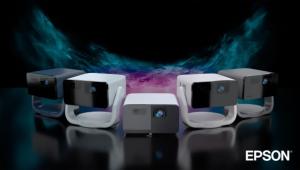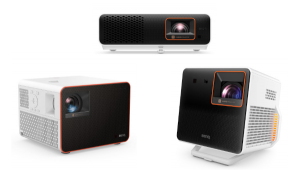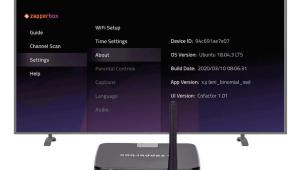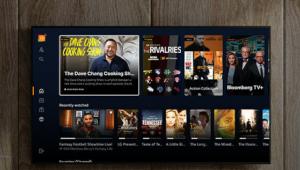Monitor Audio Studio 89 Loudspeaker Review
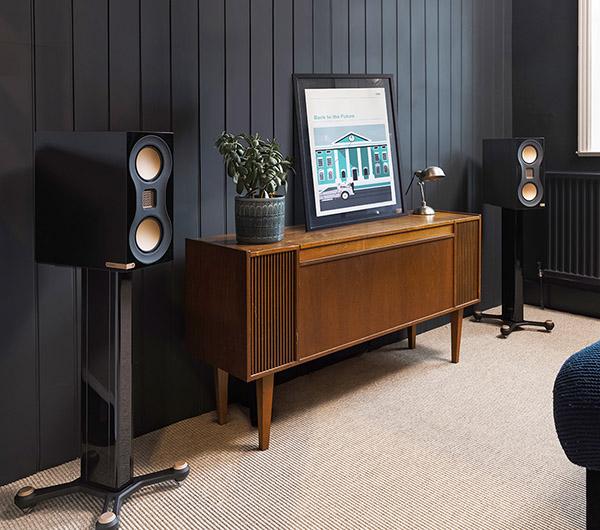
AT A GLANCE
Plus
Outstanding musical accuracy
Surprisingly deep bass & wide‑open dynamics for size
Very handsome piano‑black finish
Minus
Rear ports mean they’re not bookshelf‑friendly
No protective grilles supplied
THE VERDICT
Monitor Audio’s smallest Studio‑series model delivers reference‑grade balance, imaging, and scale far beyond its modest dimensions—so long as you treat it like the serious loudspeaker it is.
I’ve had a soft spot for small speakers for years—decades, in fact. Experience tells me that an excellently engineered small speaker, on a suitable stand, can produce stereo imaging, tonal accuracy, and, absent deep bass, dynamic realism equal to or even better than many much larger floorstanding designs. They’re also easier to live with, and, in many cases, to purchase, so what’s not to like?
Monitor Audio is a mid‑sized firm that originated in the early 1970s in Cambridge, England (now based in Essex), long a regional hotbed of audio design thanks to nearby Cambridge University, in much the same way that Cambridge, Massachusetts’ hi‑fi scene in the ’60s and ’70s drank from the firehose of Harvard and MIT. Monitor Audio has since evolved into a full‑range manufacturer, offering everything from the gigantic (and gigantically expensive) Hyphn “statement” model to its far more affordable Bronze Series, and most everything in‑between: soundbars, subwoofers, bookshelves—the whole nine yards. The Studio 89, though perhaps the smallest speaker Monitor offers, is far from the cheapest. While you can certainly find more expensive small stand‑mounts, cheaper examples are much more numerous.
The Studio 89, an update of an earlier Studio model, shares its progenitor’s profile: about the size a gallon of milk would be if full gallons came in cartons like half‑gallons—roughly 14″ × 6″ × 14″. A pair of 4¼″ mid/bass drivers vertically flank an almost‑square pleated‑ribbon tweeter Monitor calls the MPD‑III (Micro‑Pleated Diaphragm). I’m guessing that this is an evolution of the Heil Air Motion tweeter from a (gulp) half‑century ago: one of many such appearing in loudspeaker‑land since it came off‑patent a few years ago.
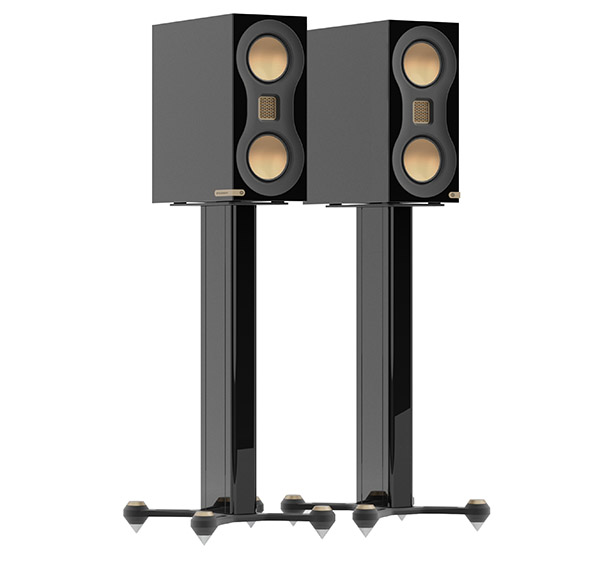
The Studio 89s I received were finished in a very nicely done piano‑black lacquer, which is currently the only available finish—lovely, but extremely susceptible to nose‑prints from a nosey German Shepherd (ask me how I know). Monitor also offers a pair of equally handsome Studio 89‑dedicated stands, similarly not‑exactly‑cheap at $750/pair. Since these are dimensionally (and visually) almost identical to the sand‑filled stands I’ve been using since the Hoover administration, and since I have enough stuff to unpack, assemble, disassemble, and re‑pack in my life otherwise, I passed on the stands.
Around back the Studios feature slot‑loaded ports at both the top and bottom edges, both finished with turbulence‑baffling nubbly plastic inserts, and a single pair of rather fancy five‑way binding posts, said to be rhodium‑plated. I have no opinion one way or the other on the rhodium thing, but applaud the connector singularity: you can count me among those who spell biwiring “buy wiring.”
Setup & Listening
After placing the Studio 89s on my above‑referenced stands, I connected my heavy but otherwise unremarkable speaker cables to the above‑referenced binders and fired up my 150‑watt‑per‑channel power amplifier and Roon server, which furnished nearly all of my auditioning.
First impression was wholly favorable: the Monitor Audios sounded, subjectively, all but indistinguishable from my long‑term small monitors—a compact, two‑domes/one‑cone Canadian three‑way, long discontinued but extremely accurate and still objectively competitive with anything their size up to good‑used‑Corolla in price. Carefully level‑matched comparisons largely confirmed the impression. My everydays go perhaps a half‑octave deeper, as you might expect from a substantially larger cabinet with an almost‑six‑inch woofer. The Studio 89s presented somewhat warmer/fuller bottom octaves and a slightly different hue of “air” or sparkle on tippy‑top treble: a shade silkier, or “lighter,” while no less extended. But through the critical midrange, on a broad range of voices, strings, and woodwinds, it was a case of pick ’em.
Among the best exemplars was my hi‑rez rip of a long‑unavailable recording of Stravinsky’s L’Histoire du soldat, taken from a first‑generation 30‑ips master dub (no, I won’t say how). This is a superb recording, and the Studio 89s did Igor full justice: the articulation of the plucked bass viol in the opening scene, the winningly honest, blare‑free tonality of the trumpet in the “March for the King,” and the fruity, mezzo‑forte thumps of the bass drum in the same scene all indicated very well‑executed, accurate tonal balance.
The Stravinsky is a chamber piece with limited content below 80Hz or so, which begged the question of just how low the Studio 89s could go. The answer was that, while not quite low enough to cover the full musical range, in real‑world playback they reached subjectively a good deal lower and louder than I might have expected. A long‑favored recording of the fake‑book standard “Cry Me a River” by the inimitable Bonnie Bramlett, done in the key of G (or possibly G‑flat), features a super‑clean and strongly mixed five‑string bass (presumably) with a low note of D/D‑flat defining the bottom at around 35Hz. The bass line was rich, smooth, and even, but that low D/flat was just a little pale compared to my everydays—which makes sense, given that the Monitors’ in‑room limit is spec’d at 48Hz (–6dB). But for the vast majority of pop, jazz, and folk music, which mostly bottoms out above 40Hz, the Studio 89s have plenty of bottom end; indeed, this is slightly warmer and richer than that of my long‑term monitors, which are more on the analytical side of things.
The little Monitors belie their size with enough detail‑maintaining dynamic range to manage dense orchestral music or even complex, shouty big‑band material. On the first hand, a brisk reading of Bartók’s Concerto for Orchestra by the Chicago under Boulez (DG/Qobuz) reproduced with excellent depth and detail, impressive textural clarity on even the fullest passages, and clearly delineated all four voices through the fugal section of the finale, despite the Hungarian’s penchant for bunching multiple voices into a relatively narrow compass. I also heard a convincing impression of proscenium height and stage depth, and a gratifyingly detailed lateral image extending to, and even slightly beyond, the speakers themselves. My notes also mention the very sweet rendition of the Chicagoans’ meaty string tone, though, to be fair, without subwoofer support (see below) the bass‑drum and tympani entrance lacked a few liters of heft.
This same characteristic clarity was even more evident, on the second hand, during playback of the Ellington chestnut “Sing, Sing, Sing” by the Gordon Goodwin Big Phat Band. An audiophile fave, this is big‑band music modernized with electric bass and a contemporary drum kit, resulting in an even more driving, dense, and much bass‑richer sound than the original arrangements. But the Monitors had no difficulty keeping the delicate ride‑cymbal work nicely delineated through even the busiest sections, while the solos—especially the trombone—punched through with exciting brassiness yet remained free of blatty‑ness.
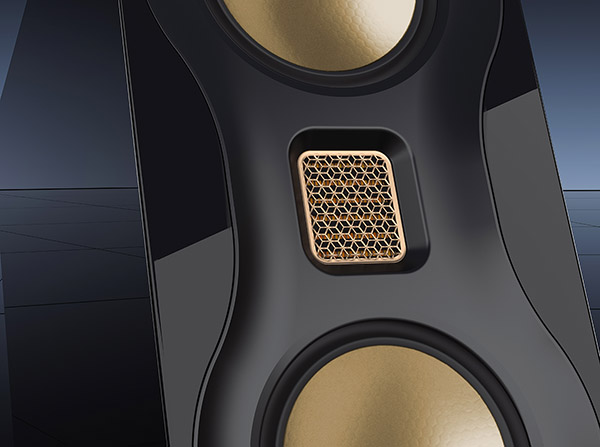
And the Studio 89s produced a volume of unstrained, undistorted sound wholly out of scale with their diminutive size. Powered with 150W each, they delivered both orchestral and big‑band sound at not‑quite‑but‑close‑enough‑to‑live levels without any sign of discord. Pushed further, the little woofers got faintly “tappy,” letting me know the limit had been approached.
Random Notes
While the Studio 89s produce bass that will be unexpected, by most listeners, from such a compact design, they can play nice with subwoofer support—I tried it. My sub‑compact but sub‑20Hz woofer required quite a bit of fiddling to get a musically satisfactory blend—this is always the case, especially with smaller vented speakers, which tend to roll off a bit more steeply—but I got there in the end, and the result was worth the trouble.
With the sub on board, the extra half‑octave‑plus gave a replay of the Gordon Goodwin track that much more excitement, and, relieved of some of the low‑end load, the Studio 89s delivered another 6dB or so of clean level, singing just as sweet and clear. And while the Bartók didn’t benefit as frequently from the extra bass extension, I again felt that the Monitors delivered just that tiny bit more depth and delicacy without laboring over bottom‑octave duties.
My non‑Monitor stands are within a half‑inch in height of the firm’s dedicated Studio 89 stands, yet they put the midpoint of the speakers’ tweeter a couple of inches below seated‑ear‑level. While the Monitors’ lateral spread is excellent, they do exhibit a good bit of tone‑color change over vertical shift, as is typical of D’Appolito M‑T‑M designs. I found that a very slight up‑tilt (a single CD jewel‑box’s worth) aired up the top octaves a fraction. Along the same lines, I settled on toeing in the Studio 89s so that they converged on a point about a foot in front of my nose.
Finally, while some might consider these little Monitors to be “bookshelf” speakers, their rear‑panel ports will require at least a few inches of breathing room (to say nothing of the fact that small monitors like these almost always sound substantially better well out into a room). And, with 14″‑plus of depth, you’d need a pretty broad shelf, though a sufficiently low credenza or similar furniture could work nicely. There are no grilles, so prospective owners with aggressive cats, ferrets, or ill‑disciplined small children should take note.
The wrap? These are very fine‑sounding, intelligently engineered small speakers. That said, their price range is a crowded one, populated by several strong competitors, including some active, DSP‑corrected designs that include amplification, room‑correction, and music‑source facilities. So the competitive environment is a tough one. But if you need a quite small, very high‑performing passive loudspeaker that, while not cheap, is not crazily spendy, Monitor Audio’s got you covered right here.
Specifications
Cabinet Dimensions (H × W × D): 13 ⅜″ × 6 3⁄16″ × 14 3⁄16″
Weight: 16 lb 12 oz each
Website: monitoraudio.com

